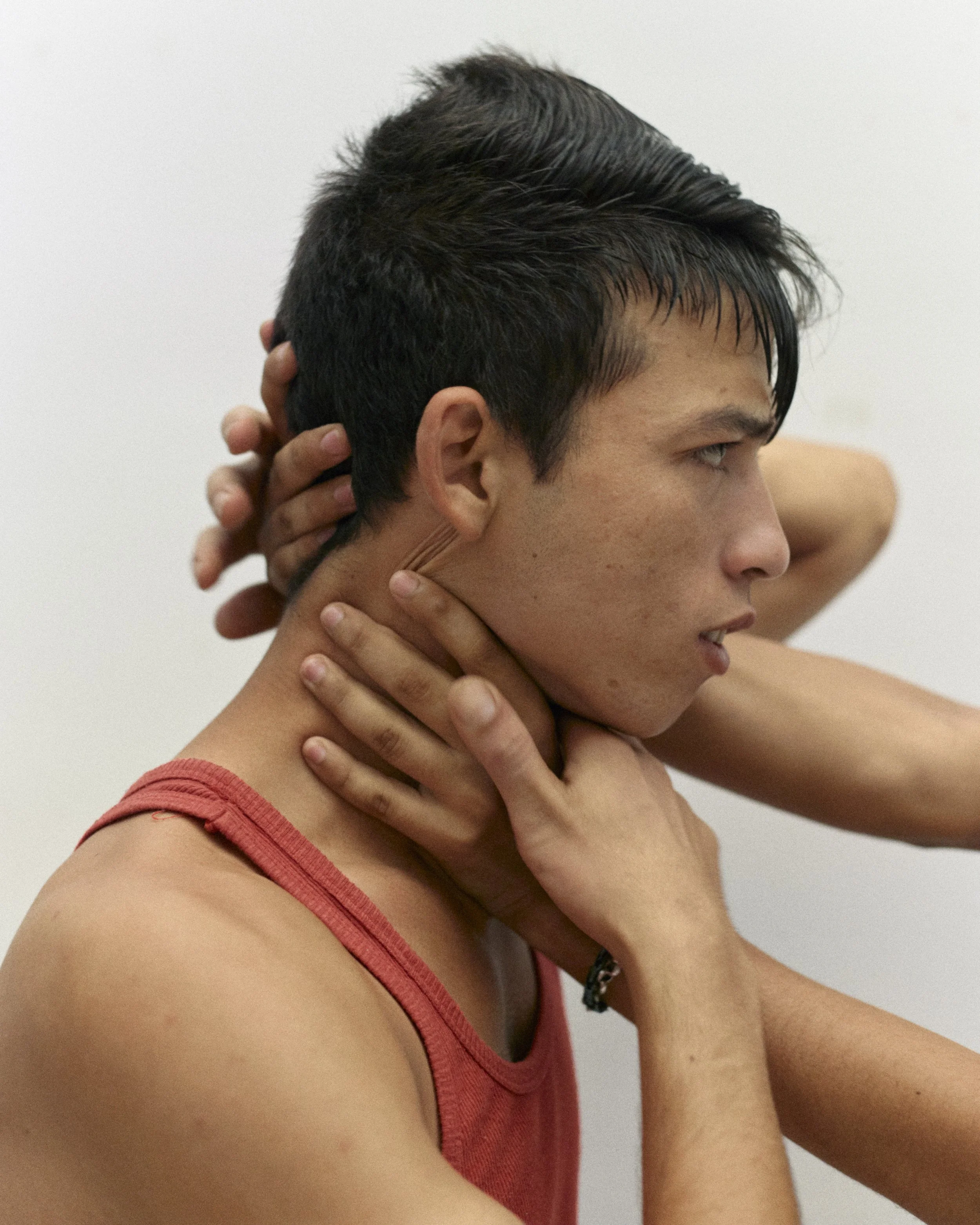120. FELIPE ROMERO BELTRÁN: A SPACE BETWEEN SUSPENSION AND WAITING.
From the first encounter of a work by Felipe Romero Beltrán, time seems to pause. His process of dissolving into atmospheres manages to translate heartbeats of waiting for a moment which may never arrive - a time held as a witnessed prayer.
Felipe Romero Beltrán, BODIES_Grecia Evangelina. Thom’s house, 2021-2024, lambda print, 120 x 150 cm. © Felipe Romero Beltrán.
‘Migration is a thread that runs through all my work. I’m interested not only in the politics of borders but in how migration reshapes identity, language, and gesture.’ F.R.B.
Please introduce your latest body of work and publication: Bravo.
Bravo (2021–24), published by Loose Joints and presented at Fundación MAPFRE, is a photographic essay on the Rio Bravo/Rio Grande border between Mexico and the United States. The project unfolds in a landscape marked by suspension and waiting: people who arrive at this river often spend months or years in limbo, never certain if the crossing will happen. The work is structured in three movements – Closures, Bodies, Breaches – combining interiors, portraits, and landscapes. Though the river is central, it rarely appears directly; it exists as absence, limit, and political force.
The idea of re-enactment of events, of role play, of performance within your work is fascinating and something that you continue to explore...
Performance and re-enactment are central strategies in my practice. In Dialect (2020–2023), I worked with migrants coming from Morocco in Seville, I worked with the structure of theatrical acts: bodies in gestures of waiting, resistance, or play, staged on scenes they've experienced it.
Later works such as Recital (2020), the same guys read aloud from Spain’s immigration law, showing the struggle between the body and the language, and Instrucción (2022–2024), a collaboration with dancers to recreate the embodied memory of dinghy crossings, extend this performative dimension. Reenactment is not about representation but about re-inscribing bodily memory: how gestures and roles can speak to law, borders, and the politics inscribed on the body.
Felipe Romero Beltrán, Untitled, from the series Dialect, 2020-2023. Courtesy by the artist, Hatch Gallery & Klemm’s Berlin. © Felipe Romero Beltrán.
The focus of migration and the influence of it within your work and practice appears to continue to be very important to you...
Migration is a thread that runs through all my work. I’m interested not only in the politics of borders but in how migration reshapes identity, language, and gesture. In Dialect, the focus was the Strait of Gibraltar as a site of passage, with young migrants negotiating legal limbo in Spain. In Bravo, the Rio Bravo is both obstacle and horizon. These projects are less about documenting a condition than about creating a visual and performative space in which to reflect on waiting, displacement, and the transformation of the body under migration regimes.
When we first met at the Circulation(s) festival in Paris some years ago I remember your extraordinary ability to breach spaces - to join different states of consciousness within one image, the melding of a present and the sense of memory while also pushing into new territory which felt like a proposal...
That idea of “breach” resonates deeply. In Bravo, “breaches” refers both to wounds on the body and to the informal paths migrants take to approach the river. It’s a liminal state – not only geographic but also temporal and perceptual. My images aim to hold that doubleness: they are traces of what has already occurred (an empty room, a mattress) but also openings toward what could come. This is what you describe: a simultaneous sense of memory and projection. I see photography as a tool for proposing new visual and political imaginaries, for breaching the fixed categories of documentary, art, and performance.
One of the visual hallmarks of your work is gesture and grace, I remember that sense from meeting you the first time also…
Grace, for me, is not about beauty in a traditional sense, but about the dignity of these gestures, the persistence of bodies under constraint. In conditions of migration, law, and waiting, grace is a form of survival, the body’s way of holding itself in time.
Felipe Romero Beltrán, Untitled, from the series Dialect, 2020-2023. Courtesy by the artist, Hatch Gallery & Klemm’s Berlin. © Felipe Romero Beltrán.
Felipe Romero Beltrán — Dialect, MEP - 5/7 rue de Fourcy 75004 Paris. 15 Oct - 7 Dec 2025.
Felipe Romero Beltrán - BRAVO, Museum of Contemporary Art, Place de la Maison Carrée - 30000 Nîmes. 8 Oct 2025 - 29 March 2026.
Felipe Romero Beltrán - Hatch & Klemm's - Photo Paris, Grand Palais, 13-16 Nov 2025.
M-A (A SPACE BETWEEN) issue 4 is available here, along with 18 international stockists, including The Serpentine, Tender, Magalleria, Jeu de Paume and Dover Street Market.
Felipe Romero Beltrán is a contributing artist to M-A (A SPACE BETWEEN) issue 2.



